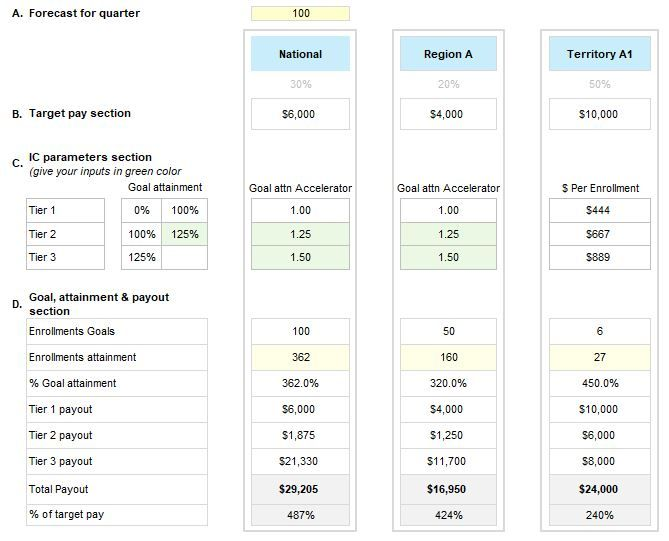Data story: Why We Use Two Quarters for Baselines - 05/24
- Vivek Rathod
- May 1, 2024
- 1 min read
𝐁𝐮𝐢𝐥𝐝𝐢𝐧𝐠 𝐚 𝐒𝐭𝐞𝐚𝐝𝐲 𝐏𝐚𝐭𝐡 𝐭𝐨 𝐒𝐮𝐜𝐜𝐞𝐬𝐬
When calculating performance incentives (IC) based on historical data, a key question arises: should we use just the previous quarter or an average of the past two? Here's why we recommend the latter approach.
𝐒𝐦𝐨𝐨𝐭𝐡𝐢𝐧𝐠 𝐭𝐡𝐞 𝐏𝐞𝐚𝐤𝐬 𝐚𝐧𝐝 𝐕𝐚𝐥𝐥𝐞𝐲𝐬:
Real-world performance often experiences natural fluctuations. A particularly strong (or weak) quarter might not accurately reflect a rep's overall capability. Taking the average of two quarters smooths out these peaks and valleys, providing a fairer baseline for IC calculations.
𝐏𝐫𝐨𝐦𝐨𝐭𝐢𝐧𝐠 𝐂𝐨𝐧𝐬𝐢𝐬𝐭𝐞𝐧𝐭 𝐏𝐞𝐫𝐟𝐨𝐫𝐦𝐚𝐧𝐜𝐞:
By using a two-quarter average, we create a more stable baseline that reps can consistently strive to surpass. This approach avoids situations where a single strong (or weak) quarter determines a rep's payout significantly.
𝐀 𝐂𝐥𝐞𝐚𝐫 𝐏𝐚𝐭𝐡 𝐭𝐨 𝐒𝐮𝐜𝐜𝐞𝐬𝐬:
Let's illustrate this with an example.
Imagine a territory with 80 TRx in Q3'23 and 120 TRx in Q4'23.
Using just Q4'23 data (120 TRx) as the baseline might create an unrealistic target for Q1'24.
However, by taking the average (80 + 120) / 2 = 100 TRx, we establish a more achievable baseline, encouraging sustained performance.
Since the rep already achieved 120 TRx in Q4'23, exceeding the 100 TRx baseline in Q1'24 is more likely.
Follow me on LinkedIn





Comments